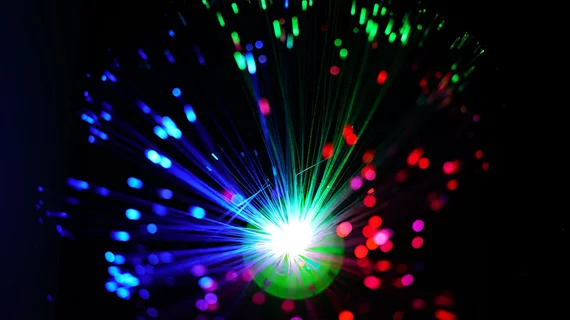Photoacoustic imaging could unseat fluoroscopy for guiding cardiac, other interventions
Johns Hopkins researchers have demonstrated the use of photoacoustic imaging to guide catheter-based cardiac interventions such as radiofrequency ablations used to correct arrhythmias.
The researchers suggest their technique, if shown successful in subsequent human studies, could displace fluoroscopy and better augment echocardiography during cardiac interventions that typically combine those two modalities.
That’s because the animals that underwent the experimental imaging guidance—two live pigs—had hearts similar in size and anatomy to those of adult humans.
In their open-access study report, running in the April issue of IEEE Transactions on Medical Imaging, Muyinatu “Bisi” Bell, PhD, and colleagues describe their work locating the tip of a cardiac catheter at multiple positions within the pigs’ beating hearts and at multiple positions along the insertion path.
Photoacoustic imaging uses pulsed laser lights to heat tissue, generating a sound wave. An ultrasound probe receives the wave, allowing it to be rendered as an image.
The technology stands to bring two main benefits to cardiovascular care, the authors suggest in their discussion section.
First, photoacoustic imaging provides more detailed information on the depth of the catheter tip than is readily achievable with fluoroscopy. The latter also exposes the patient to ionizing radiation.
Second, they explain, photoacoustic imaging supplies “enhanced visualization of blood vessel locations at depths that are obscured by clutter when using ultrasound imaging alone.”
Bell and colleagues further note that their innovation has potential to apply to any medical procedure that uses a catheter to give physicians a clear view of large vessels.
In a Johns Hopkins news release, Bell says the team hopes the method will ultimately offer heart specialists a complete system that serves four key purposes: guiding cardiologists toward the heart, determining catheters’ precise locations within the body, confirming contact of catheter tips with heart tissue and concluding whether damaged hearts have been repaired during cardiac radiofrequency ablation procedures.
“This is the first time anyone has shown that photoacoustic imaging can be performed in a live animal heart with anatomy and size similar to that of humans,” Bell underscores. “The results are highly promising for future iterations of this technology.”

